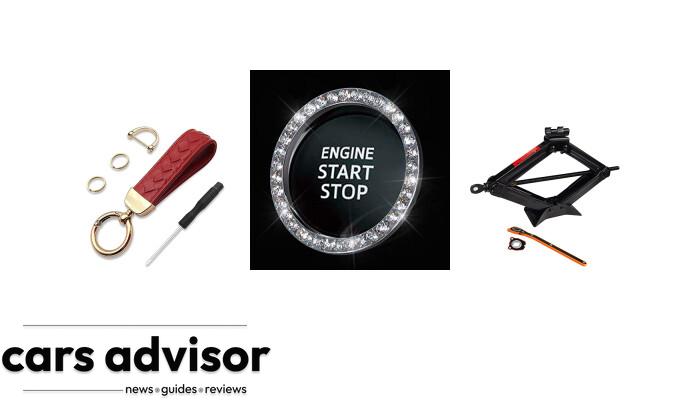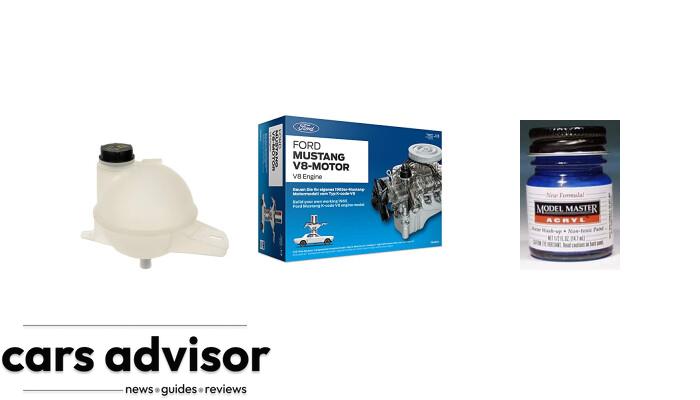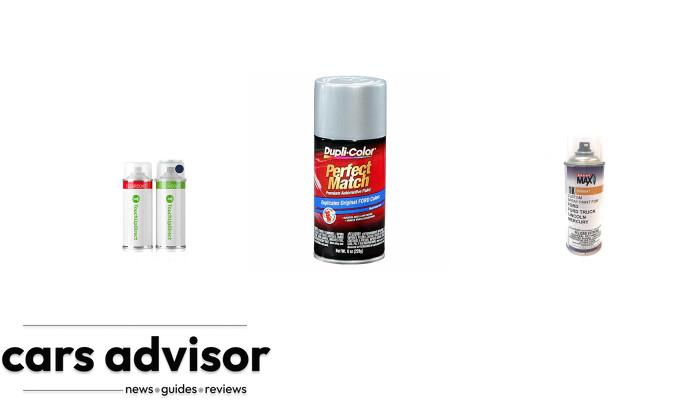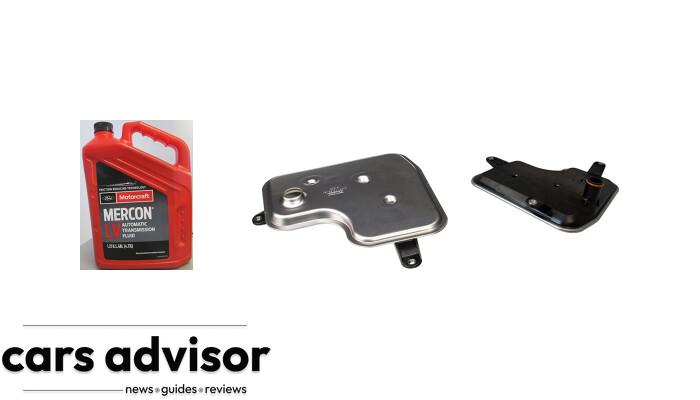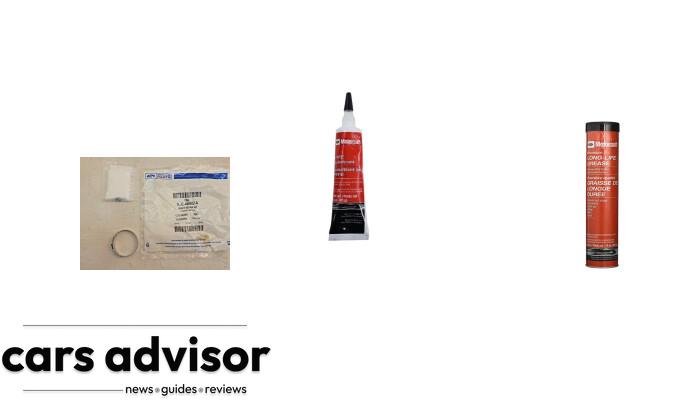Driving with the check engine light on is a common concern for many motorists, but just how long can you keep going once this pesky warning illuminates your dashboard? It’s crucial to understand what triggers the light and the potential risks involved in ignoring it.
In this blog post, we’ll delve into these important aspects and provide valuable guidance on what to do when faced with an illuminated check engine light. Keep reading to learn essential information that could save you from costly repairs and ensure your vehicle’s optimal performance.
TLDR
- The length of time you can drive with the Check Engine light on depends on the issue that triggered it.
- Depending on the severity of the problem, you may be able to continue driving for a couple of days or indefinitely.
- After fixing the problem, the Check Engine light may stay on for up to 20 drive cycles.
- If the Check Engine light is illuminated but not blinking, it means that failure is imminent but not immediate.
- If the Check Engine light is flashing, there is a serious problem with the vehicle and you should not drive it until it is fixed.
- If the only symptom your car is displaying is the Check Engine light, you are safe to drive until another issue arises.
- It’s okay to drive a car with the Check Engine light on for a few miles, but you should schedule an inspection of the engine as soon as possible.
- It is possible to drive with the Check Engine light on and the car shaking, but it is not recommended.
- The Check Engine Oil light is a separate issue from the Check Engine light and should not be ignored.
Understanding The Check Engine Light
The Check Engine Light is an indicator on the dashboard that signals a problem with one or more components of the vehicle’s engine, emissions system, or other critical systems.
What Causes The Light To Come On
The check engine light, also known as the malfunction indicator light, illuminates when your vehicle’s onboard computer detects a potential issue within its emissions or mechanical systems. The specific cause of the check engine light coming on can vary greatly since it is linked to numerous components and sensors in your car. Some common triggers include problems with spark plugs, oxygen sensors, fuel caps, catalytic converters, mass airflow sensors or ignition coils.
For instance, if your vehicle has a faulty oxygen sensor that fails to accurately measure the unburned oxygen in your exhaust system, this could lead to incorrect air-fuel mixture calculations by the car’s computer. Consequently, this can trigger the check engine light because an improper air-fuel ratio may affect emission levels and overall performance.
Similarly, if you have a loose gas cap that allows fuel vapor to escape from your tank — which could potentially harm both fuel efficiency and environmental conditions — this might also prompt the warning light to come on.
In some cases though, seemingly unrelated issues like a damaged wire connection might be enough for causing check engine lights . It’s important not only pay attention these warnings but seek out professional assistance diagnosing their root causes quickly- ensuring optimal safety efficiency while driving!
Common Issues That Trigger The Light
The Check Engine light can be triggered by a variety of issues, some of which are more urgent than others. One common problem is a faulty oxygen sensor, which helps regulate the air-fuel mixture in your vehicle’s engine. When this sensor malfunctions or fails completely, it may affect your car’s fuel economy and emissions performance. Replacing a defective oxygen sensor promptly not only prevents unwanted pollution but also ensures optimal driving conditions.
Another frequent issue behind the Check Engine light is a loose gas cap that allows fuel vapors to escape from the tank. This could trigger an evaporation leak warning in your car’s onboard diagnostic system and illuminate the check engine light.
Simply tightening the cap should solve this problem without needing further intervention from a professional mechanic. Other triggers for the ominous signal include worn-out spark plug wires, clogged mass airflow sensors, or even more serious matters like catalytic converter failure.
In any case, swift action is recommended when faced with an illuminated engine warning light to prevent exacerbating existing complications or causing new ones down the road.
The Risks Of Ignoring The Check Engine Light
Ignoring the Check Engine Light can result in reduced fuel efficiency, engine damage, and emissions violations – find out why addressing this issue is crucial for your vehicle’s health.
Reduced Fuel Efficiency
One of the risks of ignoring your check engine light is reduced fuel efficiency. When a problem triggers the light, such as a failing oxygen sensor or mass airflow sensor, it can cause your mileage to decrease. This means you may need to refill your gas tank more often than usual and spend more money on fuel.
Ignoring the issue and continuing to drive with an illuminated check engine light can only make matters worse. As time goes on, you may experience even lower fuel economy and eventually face more serious issues that require costly repairs.
To avoid these problems, it’s important to address any issues that trigger the check engine light promptly. By doing so, you’ll not only save money on fuel in the long run but also prevent expensive repairs down the road.
Engine Damage
Ignoring the check engine light can lead to long-term damage to your engine. The light serves as a warning sign that indicates there may be an issue within your vehicle’s system. If you continue driving without addressing the underlying problem, it can potentially cause severe and costly damages to your car’s engine.
For instance, if the spark plug or spark plug wires are faulty, it can lead to misfiring issues that could ultimately damage the catalytic converter or ignition coil.
Another potential issue is a malfunctioning oxygen sensor. This part plays a crucial role in regulating air-fuel mixture ratios and controlling emissions output. Ignoring this problem could result in increased fuel consumption and eventual harm to other parts of the exhaust system such as the catalytic converter. It’s essential always to keep an eye out for any warnings signaled by your check engine light because ignoring them could result in irreversible damage.
In conclusion, addressing check engine lights promptly is crucial for maintaining optimal performance from your vehicle while avoiding costly repairs down the line. Don’t wait until you experience symptoms like reduced fuel efficiency or decreased power before seeking professional advice from a reliable mechanic who knows how best to fix any issues efficiently and quickly while ensuring minimal risks of further damage occur during repair work.
Emissions Violations
Ignoring the Check Engine Light could lead to emissions violations, which can have serious legal consequences. A faulty oxygen sensor or catalytic converter results in increased levels of pollutants being released into the air we breathe. Depending on where you live, driving with increased emissions over a certain period could lead to hefty fines and even revocation of your car registration.
Furthermore, prolonged engine damage caused by ignoring the check engine light can also result in higher emissions output from your vehicle. This means that not only are you harming the environment, but you’re also hurting your wallet by potentially facing costly repair bills and emission test failures down the road.
It’s essential to take care of any issues indicated by your check engine light immediately to ensure compliance with environmental regulations and prevent further damage to both your car and the planet.
How Long Can You Drive With The Check Engine Light On?
The length of time you can drive with the Check Engine light on depends on many factors, and understanding them is crucial to avoid further damage to your engine – keep reading to learn more.
Factors To Consider
When the check engine light comes on, there are several factors to consider before deciding how long you can continue driving your vehicle. The first thing to look at is the severity of the issue. If it’s a minor problem, such as a loose gas cap or faulty spark plug wires, you may be able to drive without concern for up to 50 miles. However, if the check engine light indicates a critical fault like an overheating engine or failing catalytic converter, it would be best not to drive and have it towed immediately.
Another factor that affects how long you can drive with the check engine light on is your vehicle’s age and mileage. An older car with high mileage may encounter more issues than a newer one with low mileage. Additionally, previous maintenance history plays a crucial role in determining how long you can keep driving safely with this warning light on.
Suppose your vehicle has been well-maintained regularly by changing oil filters, checking air-fuel mixture ratios and fuel pressure levels; in that case, it should fare better than one that hasn’t had any recent maintenance done.
Ultimately when faced with this situation understand that ignoring the check-engine dash warning may cause further damage leading to costly repairs down the road while addressing these symptoms promptly will ensure safer operation avoiding breakdowns and accidents along highways during peak hours because of sudden malfunction due to negligence of this dashboard alert system over time.
Importance Of Addressing The Issue
It is crucial to address the issue that triggered the Check Engine light as soon as possible. Ignoring it can lead to significant engine damage and costly repairs down the road. For instance, a faulty oxygen sensor or spark plug may result in poor fuel economy, causing you to spend more money on gas. Moreover, driving with a failing catalytic converter can cause your vehicle to fail an emissions test, resulting in hefty fines.
If your Check Engine light comes on, it’s essential to take immediate action and diagnose the problem promptly. This will help prevent further damage and avoid costly repairs in the future. If left unattended for too long, minor issues could escalate into major problems and potentially affect other parts of your car.
Remember to always prioritize addressing any issues related to your car’s performance as they come up rather than putting them off until later. Consistent maintenance can significantly prolong your vehicle’s lifespan while saving you from expensive repairs caused by negligence or delaying action when needed. By following these tips and taking proactive steps towards caring for your car regularly, you’ll ensure its longevity while keeping yourself safe on the road!
Recommended Actions To Take
If your check engine light comes on, the best course of action recommended by professionals is to have it inspected immediately. Ignoring it could lead to costly repairs in the long run. Once you’ve identified the issue, fix it as soon as possible and ensure that the check engine light goes off. If you’re not able to get an immediate appointment with a mechanic, avoid driving at high speeds, accelerating or decelerating too quickly, or towing heavy loads until you can address the problem.
It’s also crucial to keep track of what led to the check engine light coming on. Were there any changes in fuel economy, unusual sounds from under your hood or anything else strange? These details will help mechanics identify issues more effectively and save time diagnosing problems during inspection.
Remember that regular preventive maintenance helps prevent surprise breakdowns and prolongs vehicle life while checking for potential issues before they cause additional damage. Routine oil changes, tire rotations/pressure checks & fluid top-offs keeps vehicles running smoothly; treating little problems early avoids bigger ones down road so schedule regular tune-ups with a qualified professional mechanic – preferably one who specializes in your make/model/year vehicle – avoids emergency responses when if something major does go wrong!
What To Do When Your Check Engine Light Is On
If your Check Engine Light comes on, it’s important to take action promptly by pulling over and inspecting the vehicle, getting a diagnostic test done, and addressing the issue as soon as possible. Keep reading for more tips on how to avoid Check Engine Light issues in the future.
Pull Over And Inspect The Vehicle
If your check engine light comes on while driving, it’s essential to pull over and inspect the vehicle immediately. Ignoring this warning signal can lead to severe damage to your car or even injury to you and others on the road. Firstly, make sure you are in a safe location away from traffic before getting out of the vehicle. Check for any signs such as smoke or strange smells coming from under the hood or exhaust pipe.
Once you have done that, take a close look at your dashboard gauges for any additional warning signals that may indicate if there is an issue with the car’s oil pressure, temperature gauge or battery charge indicator lights. If everything seems normal, check under the hood for anything unusual- things like loose wires and broken hoses could be causing issues too. Make sure to take note of what you see so that when consulting with a mechanic later on down the road they will have more detailed information about what happened.
It is crucial not to ignore these warnings since they can turn into much more significant problems if left unaddressed. By taking preventative measures immediately after noticing something wrong with your vehicle (such as pulling over and inspecting it), you will help ensure all possible risks are avoided while also avoiding costly repairs in future months/yearly maintenance costs!
Get A Diagnostic Test Done
When your Check Engine light comes on, it’s time to get a diagnostic test done. This involves connecting the vehicle to a diagnostic scanner that reads any trouble codes stored in the system. The mechanic can then use this information to identify the specific issue causing the warning light.
It’s important to note that getting a diagnostic test done as soon as possible can save you both time and money in the long run. Ignoring the problem could lead to further damage and higher repair costs down the line. By addressing issues early on, you may also be able to avoid more serious problems from developing.
Diagnostic tests vary in cost, depending on where you go and what type of car you have. While some auto parts stores offer free diagnostic tests, it’s best to take your car to a professional mechanic for an accurate diagnosis and precise repair recommendations based on their years of experience working with vehicles similar or identical to yours.
Address The Issue Promptly
If your check engine light comes on, it is important to address the issue promptly. Ignoring the warning could lead to further problems and potentially expensive repairs down the line. Depending on what triggered the light, you may be able to continue driving for a short period of time or indefinitely. However, if there are other symptoms accompanying the light such as unusual noises, vibrations, or smells coming from your car, it’s best to get it checked out immediately.
One way to address the issue quickly is by getting a diagnostic test done as soon as possible. A professional mechanic can use specialized tools and equipment to read any error codes that caused the light to come on and pinpoint exactly what needs fixing. Once you know what needs repairing or replacing, don’t hesitate to take action and schedule necessary services right away.
In summary, dealing with a check engine light requires prompt attention in order to prevent minor issues from turning into major ones that cause significant damage or expense. Don’t wait until more symptoms appear before taking action – instead act fast by getting a diagnostic test done and be willing to pay for any necessary services recommended by your trusted mechanic.
Tips To Avoid Engine Light Issues
To avoid Check Engine light issues, it’s important to regularly maintain and service your vehicle, keep an eye on dashboard gauges, use high-quality fuel and oil, choose a reliable mechanic, and practice safe driving habits. Keep reading for more valuable information on how to take care of your car and prevent any unwanted surprises.
Regular Vehicle Maintenance And Service
Regular vehicle maintenance and service is essential to avoid Check Engine light issues. Simple things like regular oil changes, checking tire pressure, and replacing air filters can go a long way in keeping your vehicle running smoothly. A professional mechanic can also perform routine inspections of your engine components to catch any potential problems before they turn into major issues.
For example, a faulty spark plug could cause the Check Engine light to come on, but it’s something that could easily be prevented with regular maintenance. Ignoring something as small as a spark plug issue could lead to more serious problems down the road such as engine misfires or reduced fuel efficiency.
Additionally, staying up-to-date on manufacturer-recommended service schedules can help prevent any surprises when it comes time for smog checks or other emissions tests. By taking care of your vehicle with regular maintenance and servicing by professionals, you’ll not only keep your Check Engine light off but also extend the lifespan of your car while improving its performance and fuel economy.
Keep An Eye On Dashboard Gauges
It’s always a good idea to keep an eye on your dashboard gauges when driving. Watching out for any unusual fluctuations or warnings can prevent bigger issues down the road, such as overheating or running out of fuel. Overheating is one of the most common reasons why the check engine light comes on and it can also cause the temperature gauge to jump up quickly.
In addition, monitoring your fuel gauge is crucial in making sure you never run low on gas. Running out of fuel causes damage to your car’s engine and can also trigger the check engine light. Keeping an eye on these basic dashboard gauges helps you catch problems before they become major headaches that require expensive repairs or leave you stranded by the side of with an empty tank.
Use High-Quality Fuel And Oil
One way to avoid triggering the check engine light is by using high-quality fuel and oil for your vehicle. This can help ensure better fuel efficiency and prevent potential issues with components like spark plugs, catalytic converters, and oxygen sensors. Premium-grade gas typically burns cleaner and contains fewer impurities that can harm the engine or contribute to emissions problems.
Regularly changing your car’s oil with a reputable brand and viscosity recommended in the owner’s manual can also aid in preventing check engine light issues. Clean oil lubricates internal parts of the engine while capturing dirt particles that could otherwise cause damage over time. Neglecting regular oil changes could lead to sludge buildup, which may cause overheating, decreased performance, or other complications.
By prioritizing high-quality fuel and oil choices for your vehicle, you are taking preventative measures that could keep your car running smoothly while minimizing emissions-related concerns that might trigger an illuminated check engine light down the road.
Choose A Reliable Mechanic
When it comes to maintaining the health of your vehicle, choosing a reliable mechanic is crucial. While you may be tempted to choose the cheapest option or go with a friend’s recommendation, doing proper research can save you time and money in the long run. One way to find a trustworthy mechanic is by checking online reviews and ratings from previous customers. You can also ask for recommendations from trusted sources such as family and friends who have had positive experiences.
Another important factor when selecting a mechanic is their expertise in dealing with your specific car make and model. Some mechanics specialize in particular types of vehicles or repairs, so it’s essential to look for one that has experience working on your type of car. Additionally, choosing a certified professional will give you peace of mind knowing that they have undergone rigorous training and meet industry standards.
By selecting a reliable mechanic, you not only ensure that any issues with your vehicle are dealt with promptly but also help prevent future problems from occurring due to improper care. Regular maintenance checks by an expert will keep your car running efficiently while addressing small issues before they turn into something more significant. Ultimately, investing in quality care means less stress on both yourself and your wallet down the line.
Practice Safe Driving Habits
To avoid potentially dangerous situations, it is important to practice safe driving habits even when the check engine light is not on. Defensive driving skills can help you stay alert and aware of your surroundings while on the road. This means avoiding distractions such as texting, checking messages, eating or watching TV while driving.
Additionally, maintaining a safe following distance from other vehicles can give you more time to react in case of sudden stops or turns. Always keep an eye out for potential hazards on the road such as potholes, debris or wildlife that may affect the handling and safety of your vehicle. Being mindful of these things will go a long way towards ensuring your safety and those around you.
Lastly, remember that poor fuel economy could also be caused by poor driving habits like excessive speeding or sudden braking which are not only unsafe but also costly in terms of gas mileage. By practicing good driving habits consistently and making sure your vehicle is in top condition with regular maintenance checks – including addressing issues flagged by the check engine light – you’ll reap both safety benefits and improved fuel efficiency over time.
Conclusion
In conclusion, driving with the Check Engine light on can lead to serious consequences such as reduced fuel efficiency, engine damage or even emissions violations. The length of time that you can drive with the light on depends on several factors, but it’s important to address the issue promptly and get a diagnostic test done.
Always remember to maintain your vehicle regularly by using high-quality fuel and oil and choosing a reliable mechanic. And most importantly, practice safe driving habits at all times. So next time your Check Engine light comes up, don’t ignore it – act now to avoid any potential dangers on the road!















